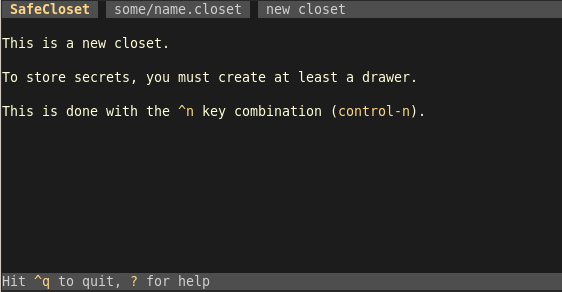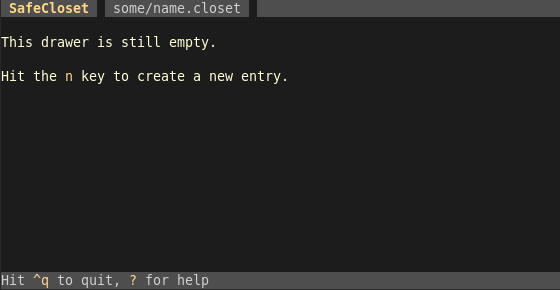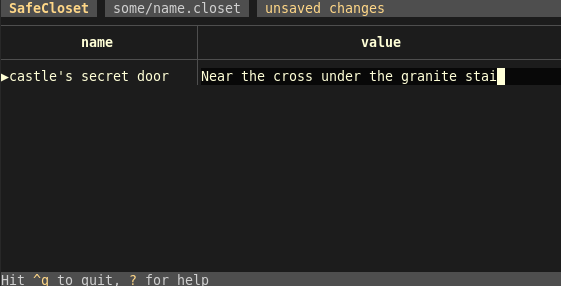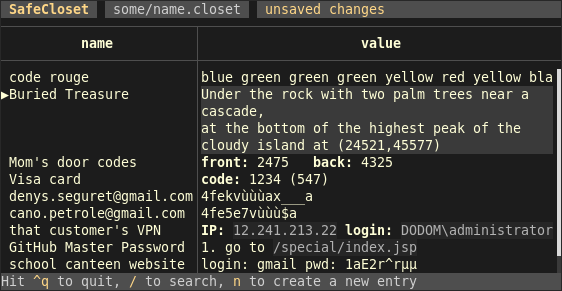Purpose
SafeCloset is a secure, cross-platform, and convenient secret holder, running as a terminal application without interprocess communication nor temporary files.
It stores your secrets in a closet file you can publicly backup, keep with you on an USB key, etc.
A closet contains drawers, each one is found and open with its own password.
A drawer contains a list of entries (each one being a key and a value). Values are texts in which you can store a code, a password, comments, a poem, some data, etc.
A drawer can also contain deeper crypted drawers.
Usage Overview
Those screenshots are small, to fit here, but you may use SafeCloset full screen if you want.
Create your closet file
Run
safecloset some/name.closet

Have a glance at the help
Hit ? to go to the help screen, where you'll find the complete list of commands.

Hit esc to get back to the previous screen.
Create your first drawer
Hit ctrln


If you want, you can create a deeper drawer there, at any time, by hitting ctrln.
Or hit n to create a new entry, starting with its name then hitting tab to go fill its value.

Change the selection with the arrow keys. Go from input to input with the tab key. Or edit the currently selected field with a.
Reorder entries with ctrl🠕 and ctrl🠗.
In SafeCloset, when editing, searching, opening, etc., the enter key validates the operation while the esc key cancels or closes.
You may add newlines in values with ctrlenter or altenter:

You may notice the values are rendered as Markdown. This is opt-in, with a toggle in the drawer's menu.
Don't hesitate to store hundreds of secrets in the same drawer as you'll easily find them with the fuzzy search.
Search with the / key:

When in the search input, remove the search with esc, freeze it with enter.
Check the menu
The menu opens on a hit on esc. It features the essential commands and their shortcuts:

Save and quit
Hit ctrls to save, then ctrlq to quit.
Reopen
The same command is used later on to open the closet again:
safecloset some/name.closet
It may be a good idea to define an alias so that you have your secrets easily available.
You could for example have this in you .bashrc:
function xx {
safecloset -o ~/some/name.closet
}
The -o argument makes safecloset immediately prompt for drawer password, so that you don't have to type ctrlo.
On opening, just type the password of the drawer you want to open (all will be tested until the right one opens):

Warning
SafeCloset hasn't been independently audited yet and comes with absolutely no guarantee. And I can do nothing for you if you lose the secrets you stored in SafeCloset.